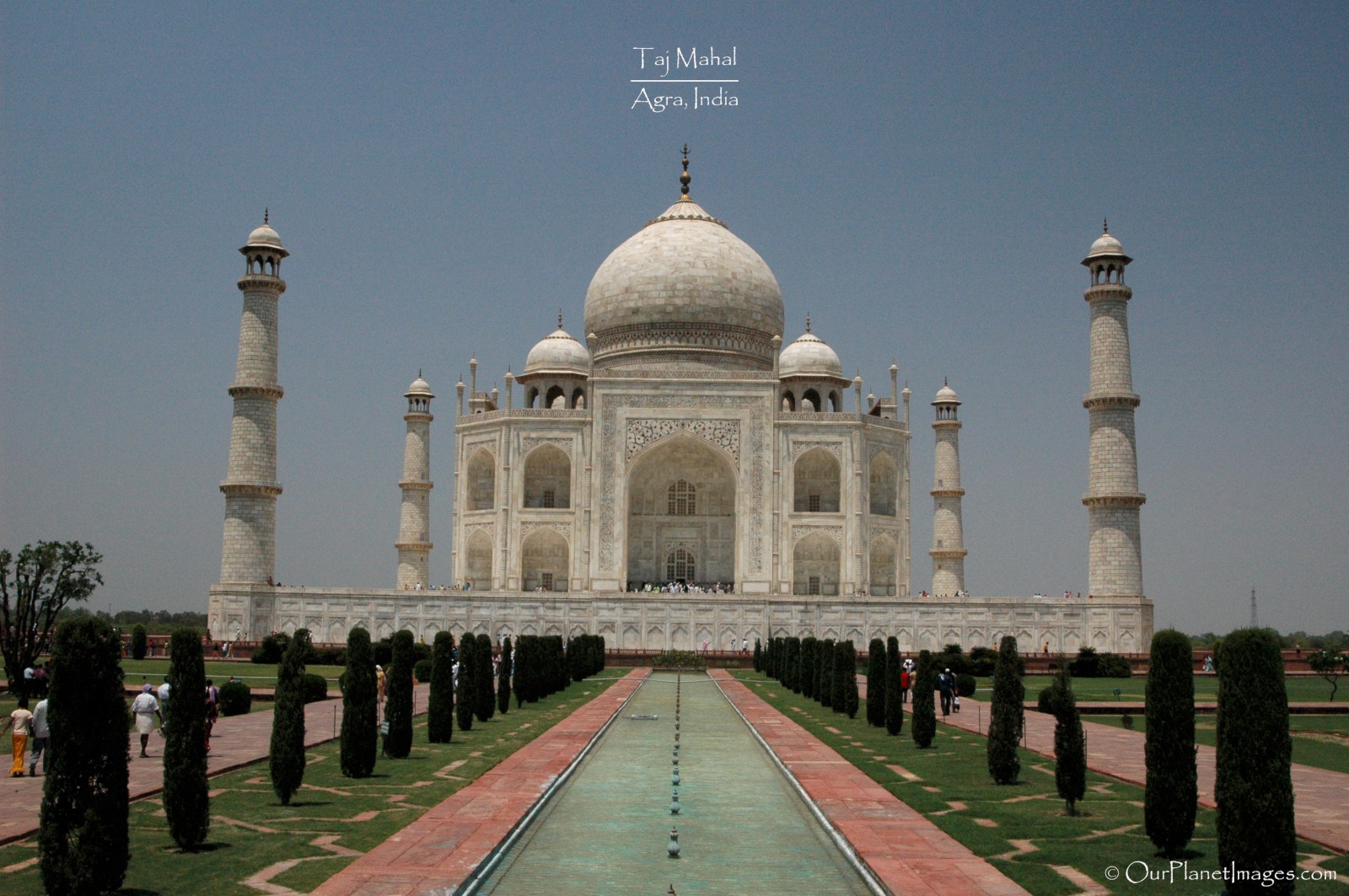The Taj Mahal is a mausoleum constructed primarily from white marble on the south bank of the Yamuna River near the city of Agra, India. The memorial was completed in 1653 but it took 22 years to build using a labor force of 20,000 people and 1000 elephants.
The Taj Mahal is one of the most famous buildings in the world and most people know some of the story behind the building of the Taj Mahal. The Taj Mahal memorial was built because of the great love shared between Shah Jahan (Emperor at Agra) and Mumtaz Mahal (meaning “Jewel of the Palace”). Legend has it that Shah promised Mumtaz that he would build the world’s most beautiful monument as a symbol of the love they had for each other.
Almost everyone has heard of the Taj Mahal and seen photos of it but most people have not seen more than the photo that I have shown as my lead photo. My intension in this post is to provide information about the Taj Mahal and more detailed photos of the Taj Mahal Complex that most people will be surprised to know.
One of my most vivid memories of visiting the Taj Mahal was walking through the entry gate and seeing my first glimpse of the Taj Mahal. The entry gate is dark and the Taj Mahal is so bright white that it projects into the entry of the complex and everyone walking through the entry opening stops in their track. The photo below is the first sighting that I saw when I walked through the entry gate of the walled complex.
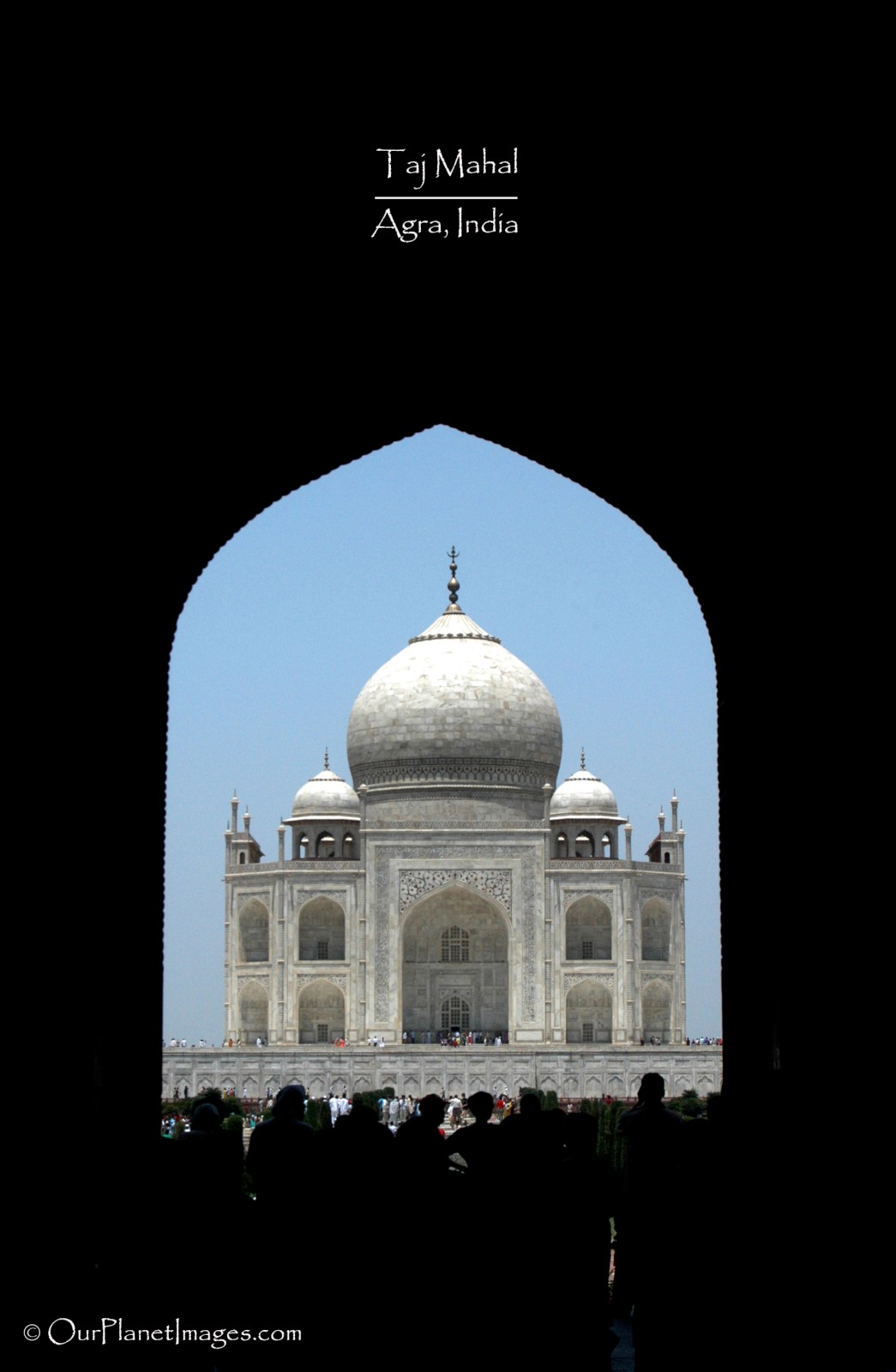
The entry gate itself is probably something that most people have not seen. The photo below is of the entry gate into the Taj Mahal complex from outside of the walled complex. The entry gate is so impressive that it could be an attraction by itself. This gate is so astonishing that it has been named the “Great Gate”.
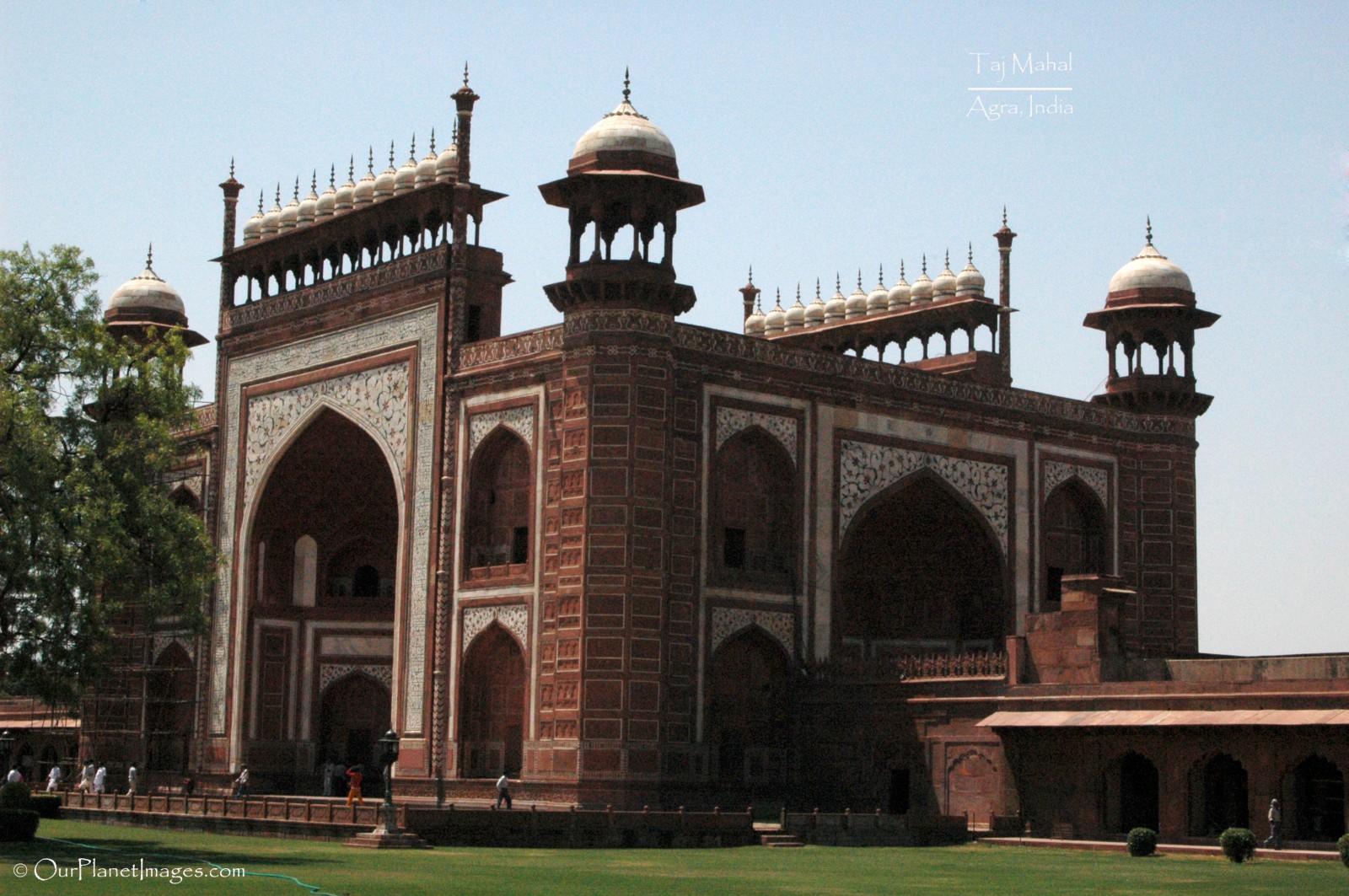
Once you enter through the Great Gate, the size of the complex and the size of the Taj Mahal become overwhelming. Between the Great Gate and the Taj Mahal is a four square garden with center pool in the middle. The first picture below shows the center pool and the next picture shows how massive the gardens are within the complex.
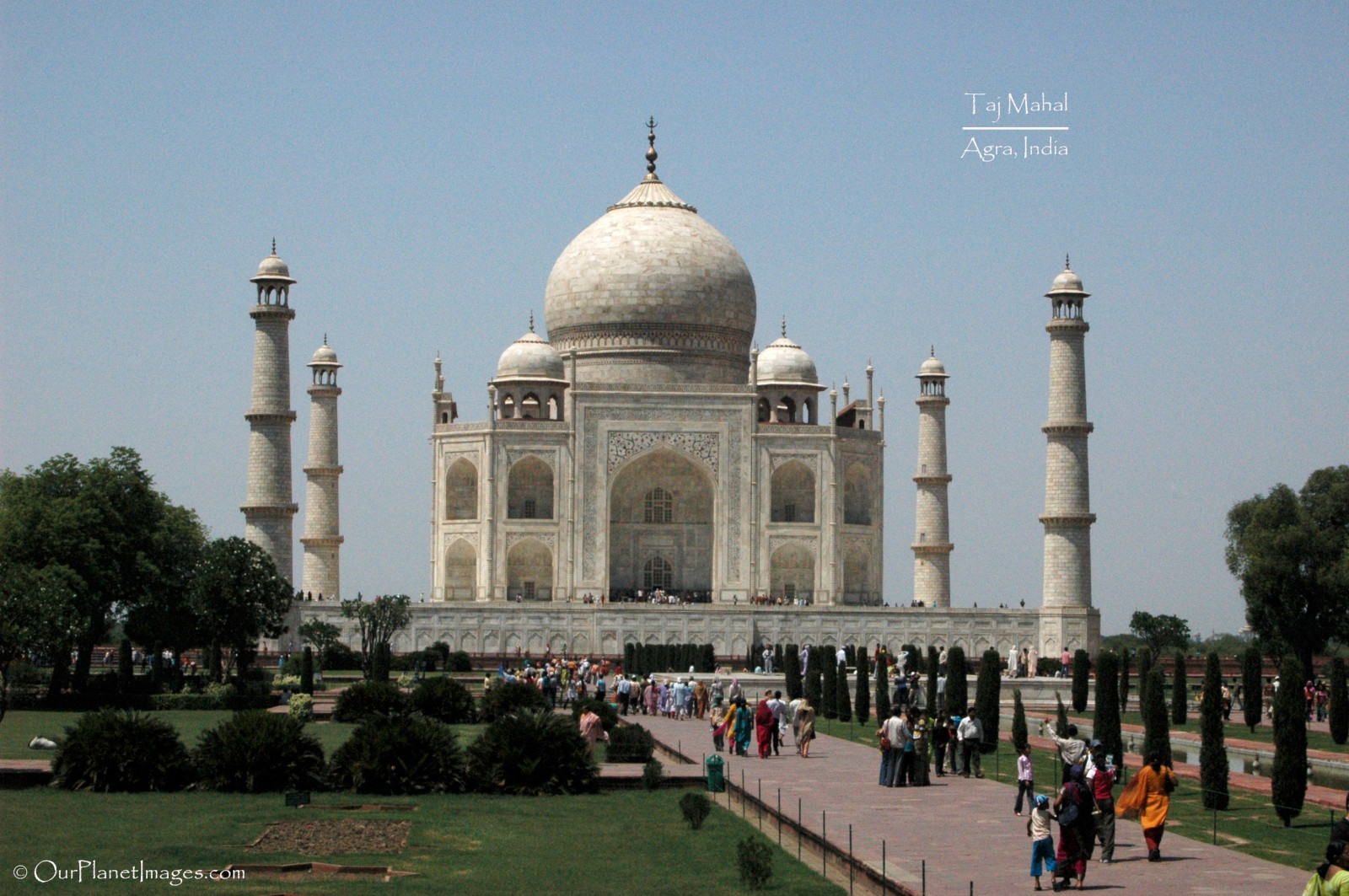
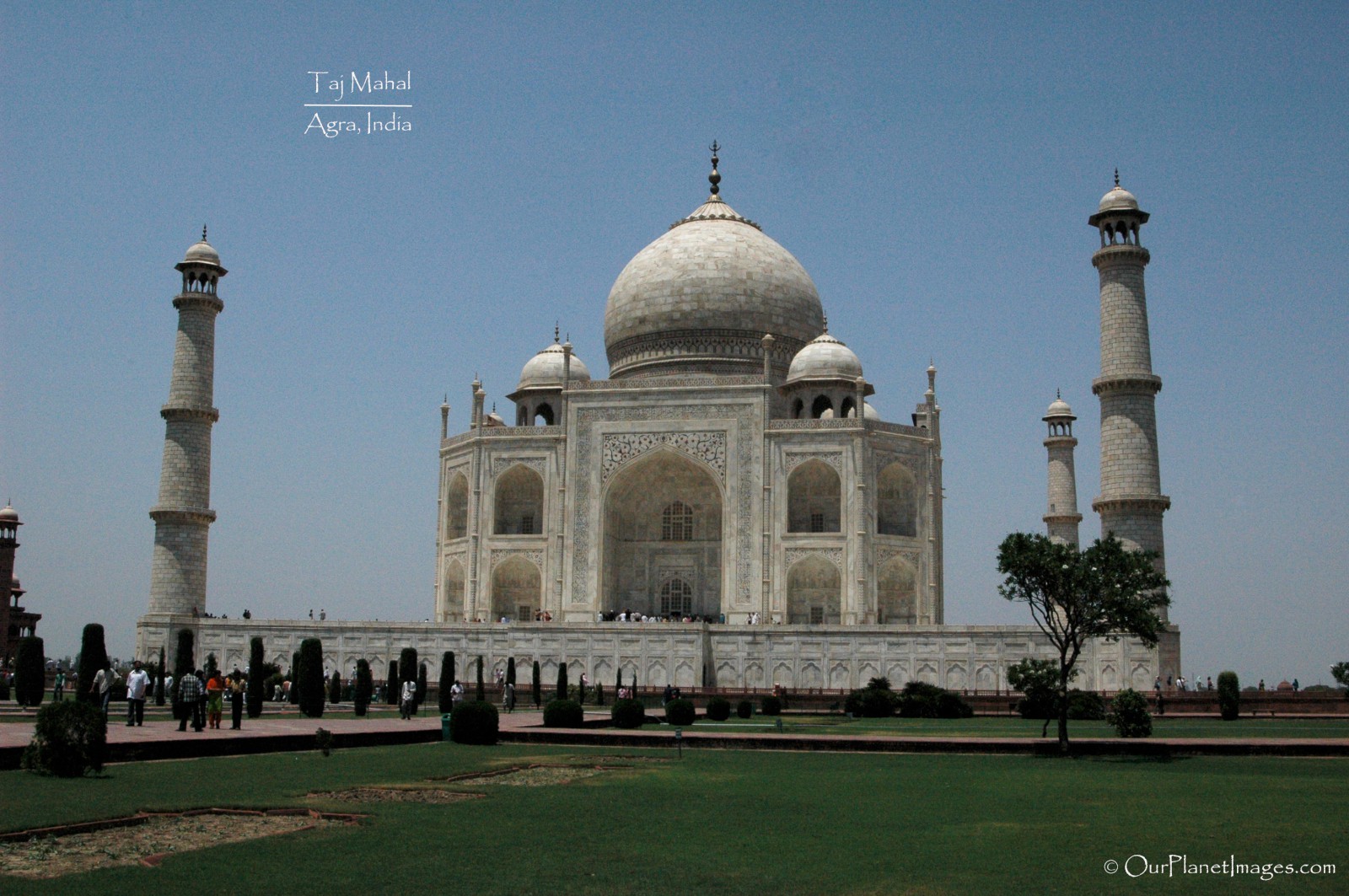
The next two photos are taken from the center pool. The first photo is of the Taj Mahal and is a photo that most people have seen of the Taj Mahal. This photo is an iconic photo with the reflection of the Taj Mahal in the water channel. The next photo is also from the center pool but it is looking back at the Great Gate with the water channel between the center pool and the Great Gate. There are actually four water channels that divide the garden into four squares. The four water channels represents the four rivers of paradise that is mentioned in the Koran.
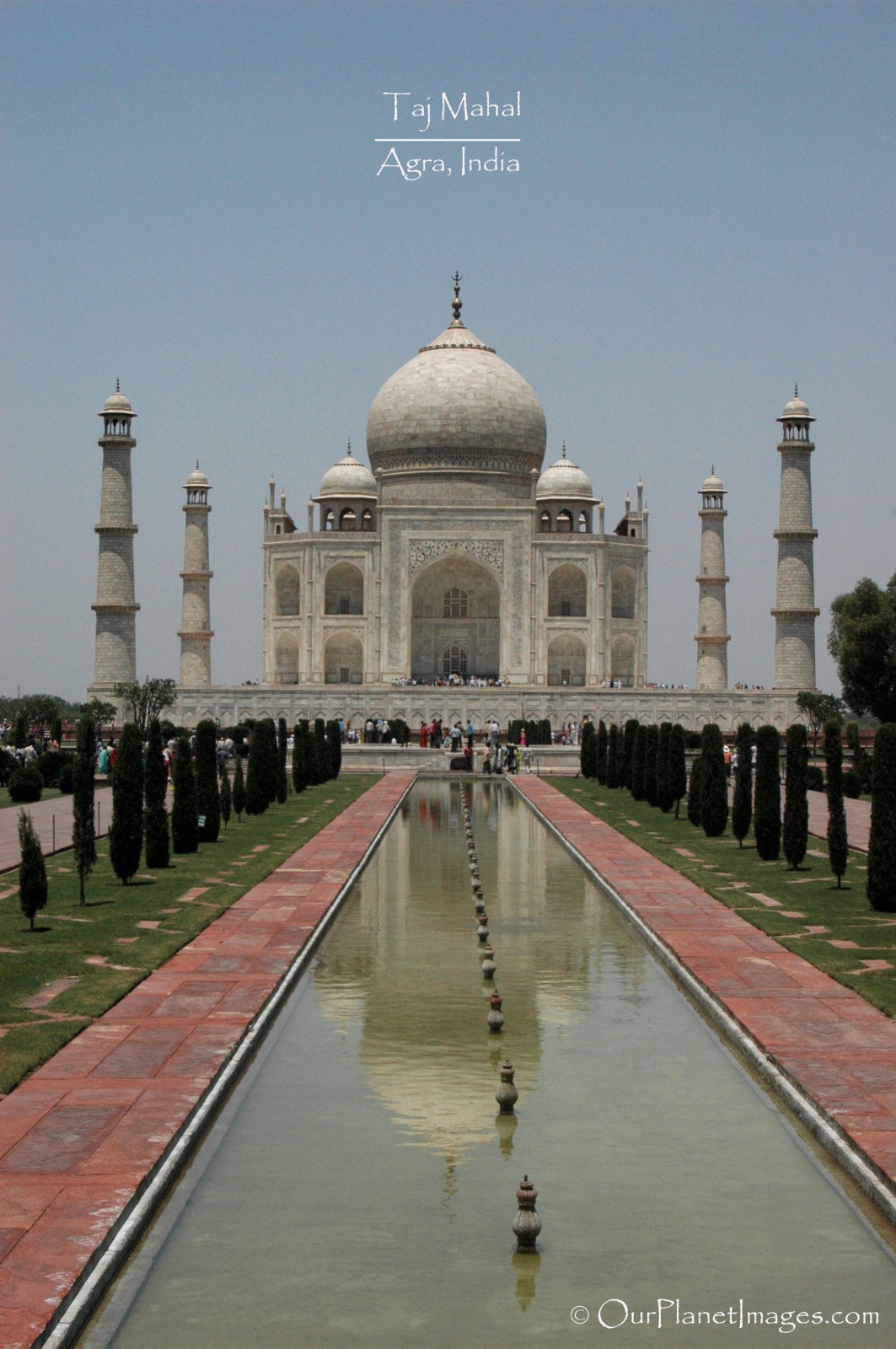
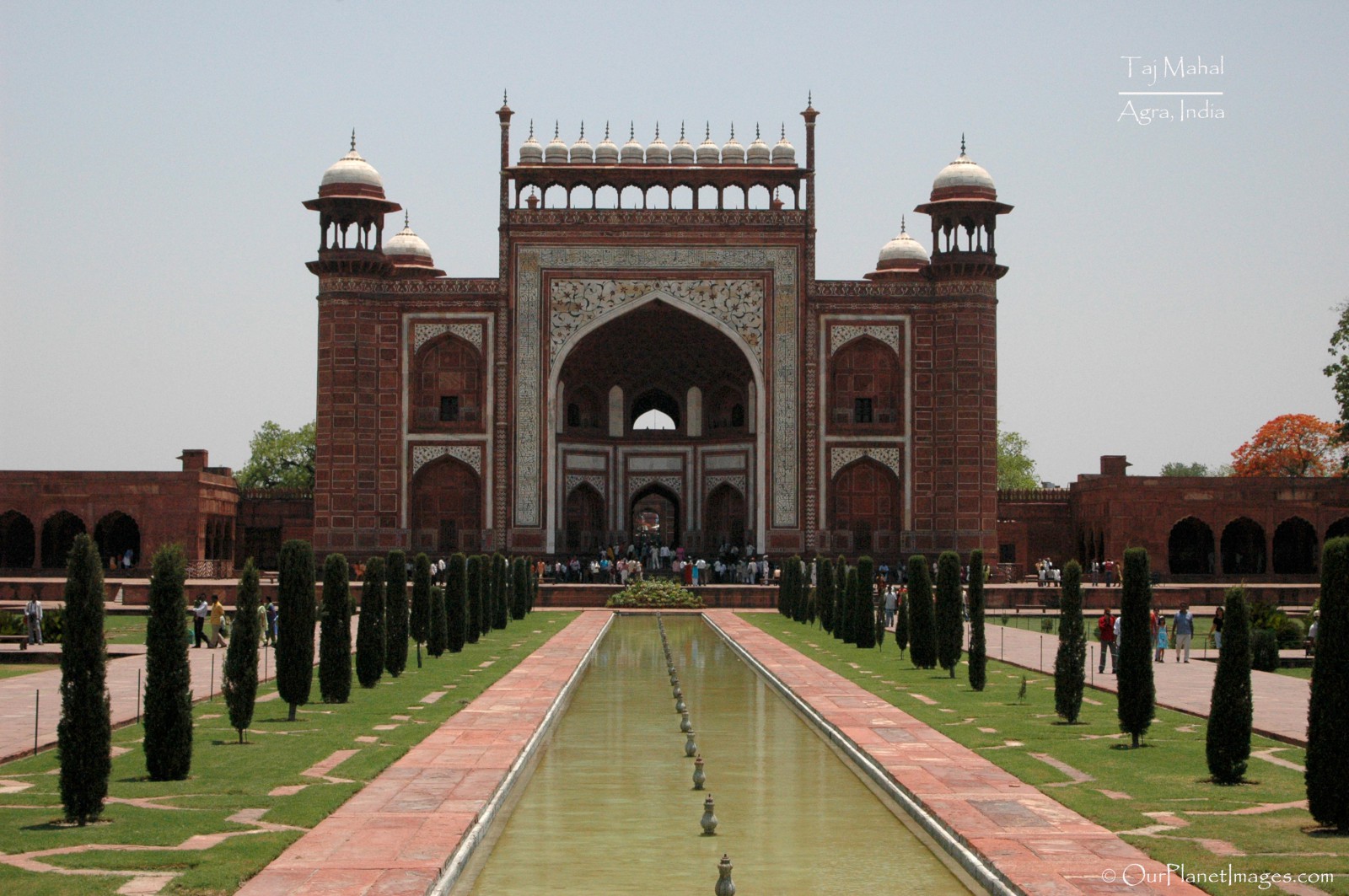
The next two photos are of the Taj Mahal with a portion of the center pool in the foreground.

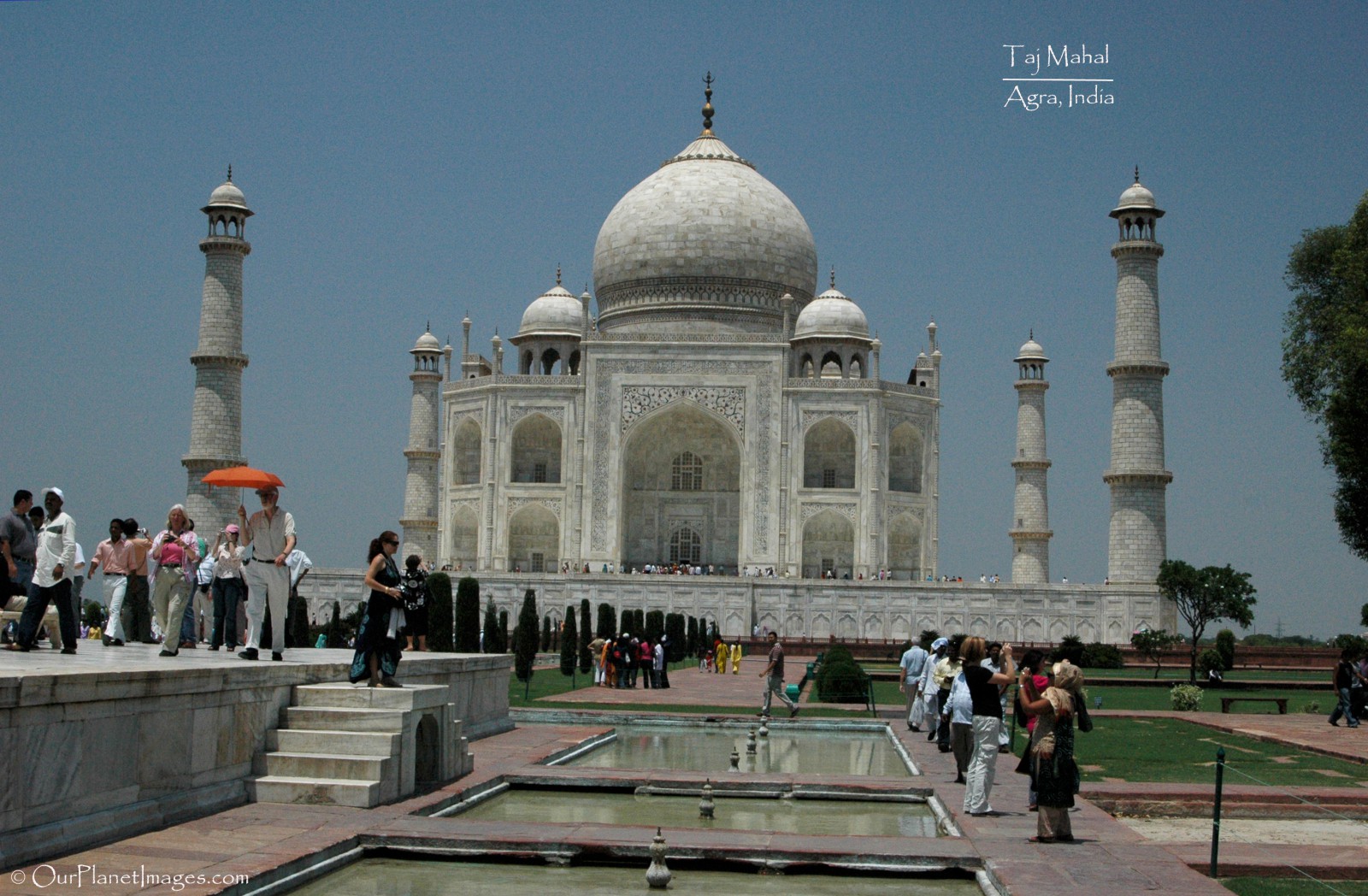
There are four minarets, one at each corner of the Taj Mahal structure and they are about 130 feet tall. The minaret is a symbol of elevation to the sky and is sort of a bridge between the earth and the sky. The meaning of the word minaret is “lighthouse” in Arabic, so the minaret is seen as a spiritual lighthouse.
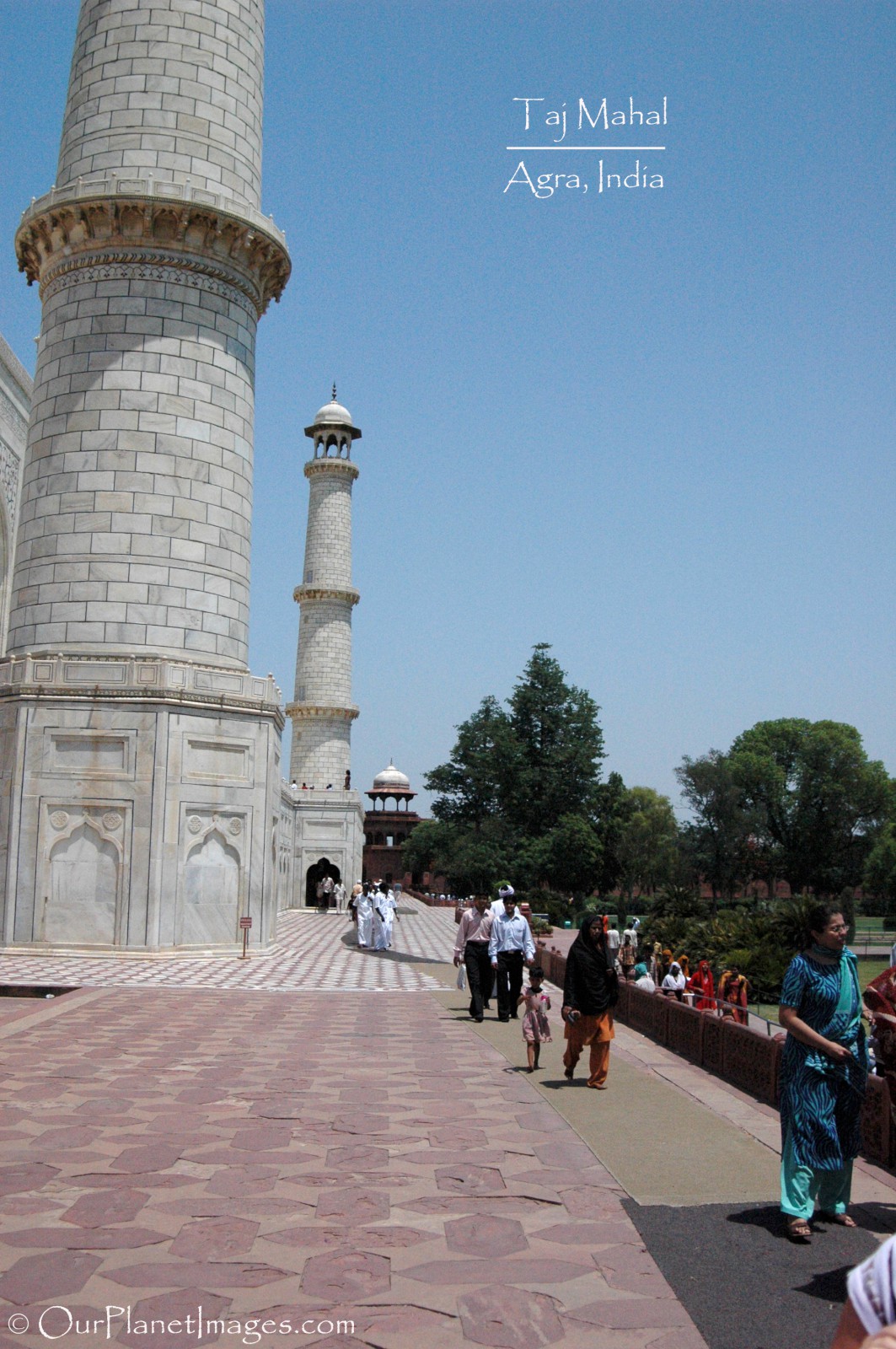

The Taj Mahal memorial structure is on the opposite end of the complex from the Great Gate and is located alongside the Yamuna River. On the sides of the memorial building is a mosque on one side and a guest house on the other side. These buildings are identical from the outside so they cannot be identified without going into the building.
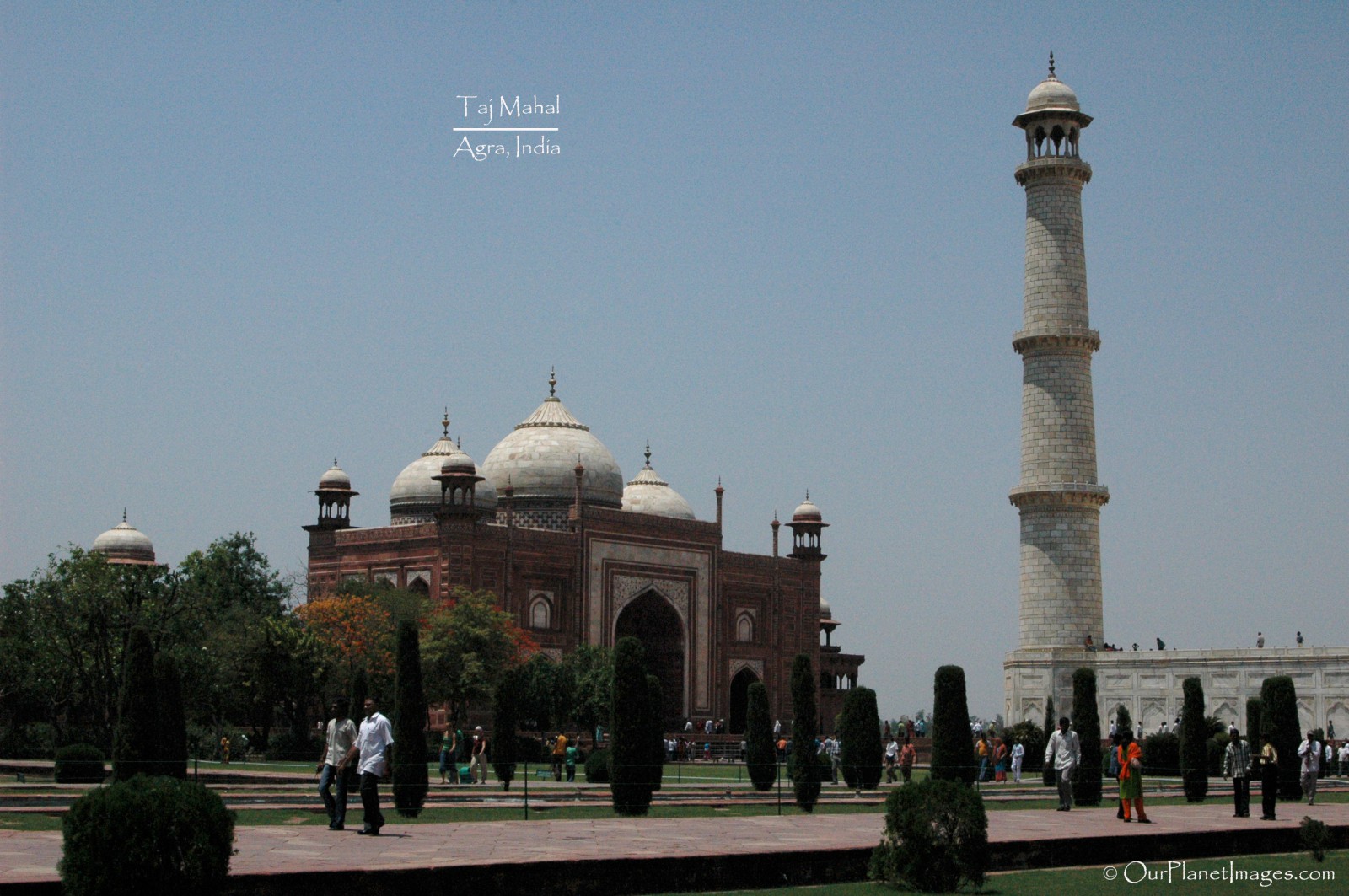
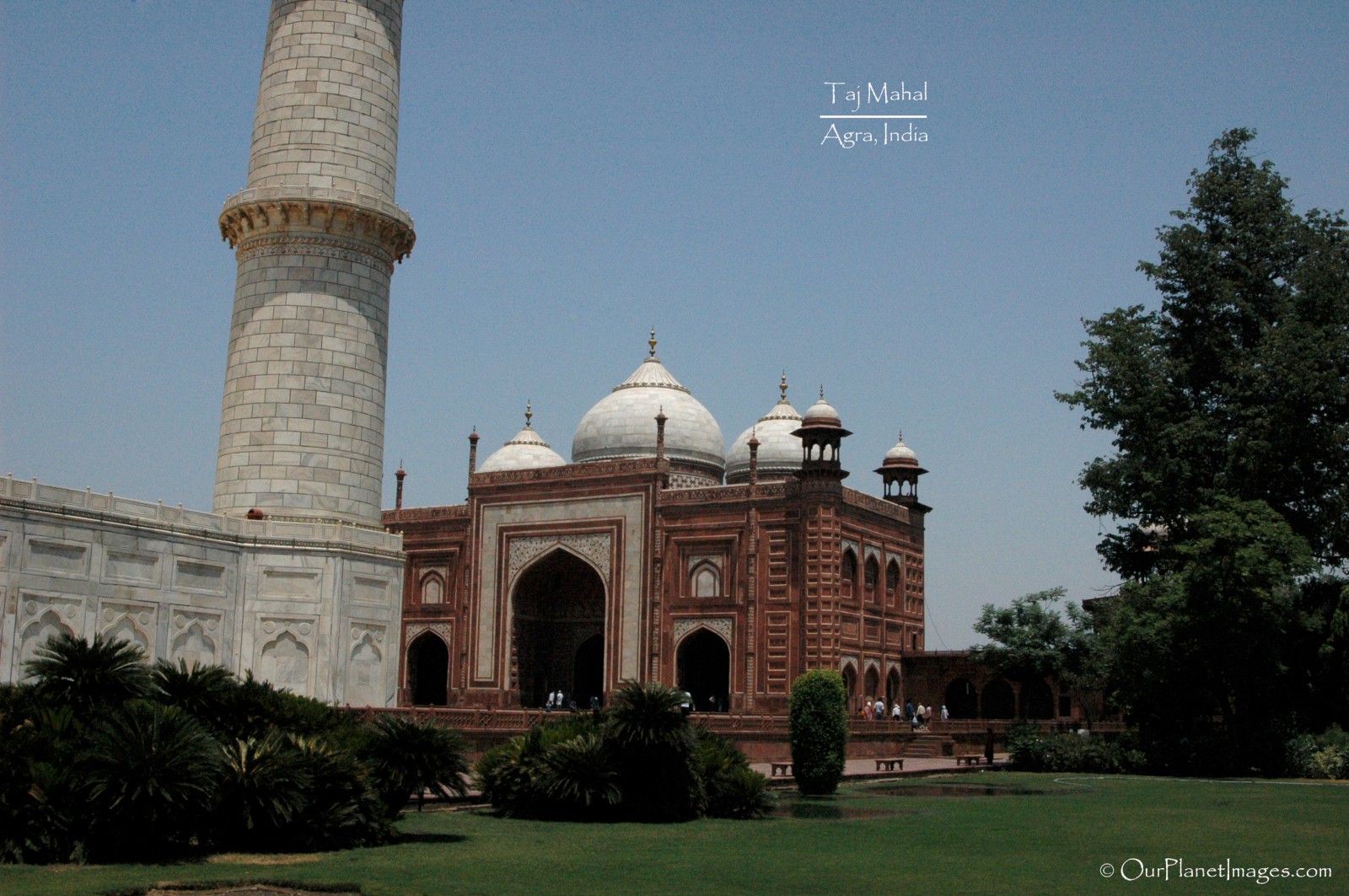
One of the most overlooked things about the Taj Mahal is the detailed skillful stone work that was used in the construction of the buildings in the complex. Decorative colored stones were embedded into the white marble above each archway of the Taj Mahal and the other buildings in the complex. To place these stones into the marble, a cavity was carved into the marble that is the exact shape of the colored stone. The stone were then press fit into the cavity and the stone fit is so exact that there are no gaps. The photo below shows these decorations on the arch of the Taj Mahal and of the mosque.
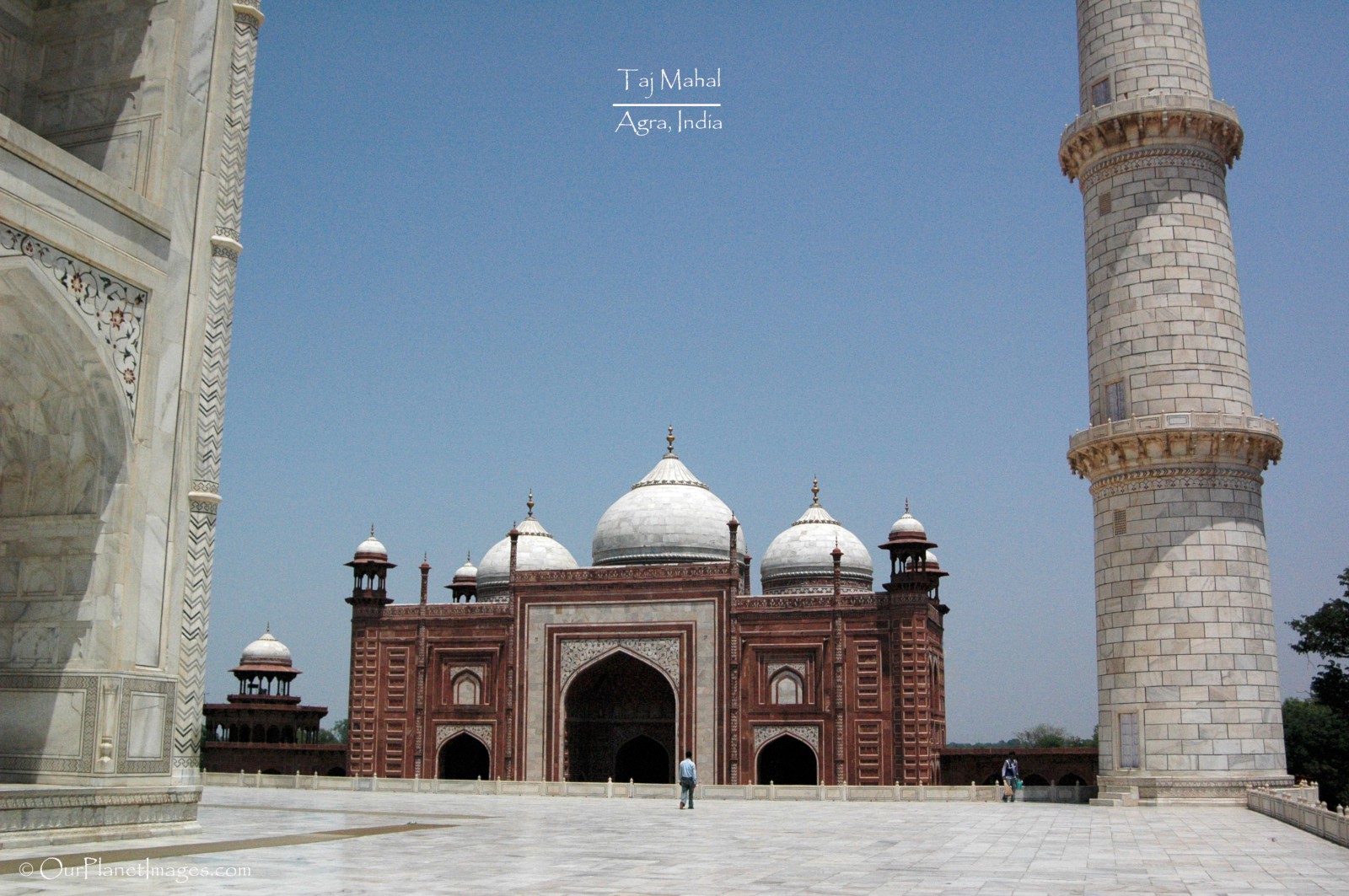
The mosque and guest house are just as amazing as everything else in the Taj Mahal complex. These buildings are much larger than I had imagined and they are created with beautiful design and amazing details.
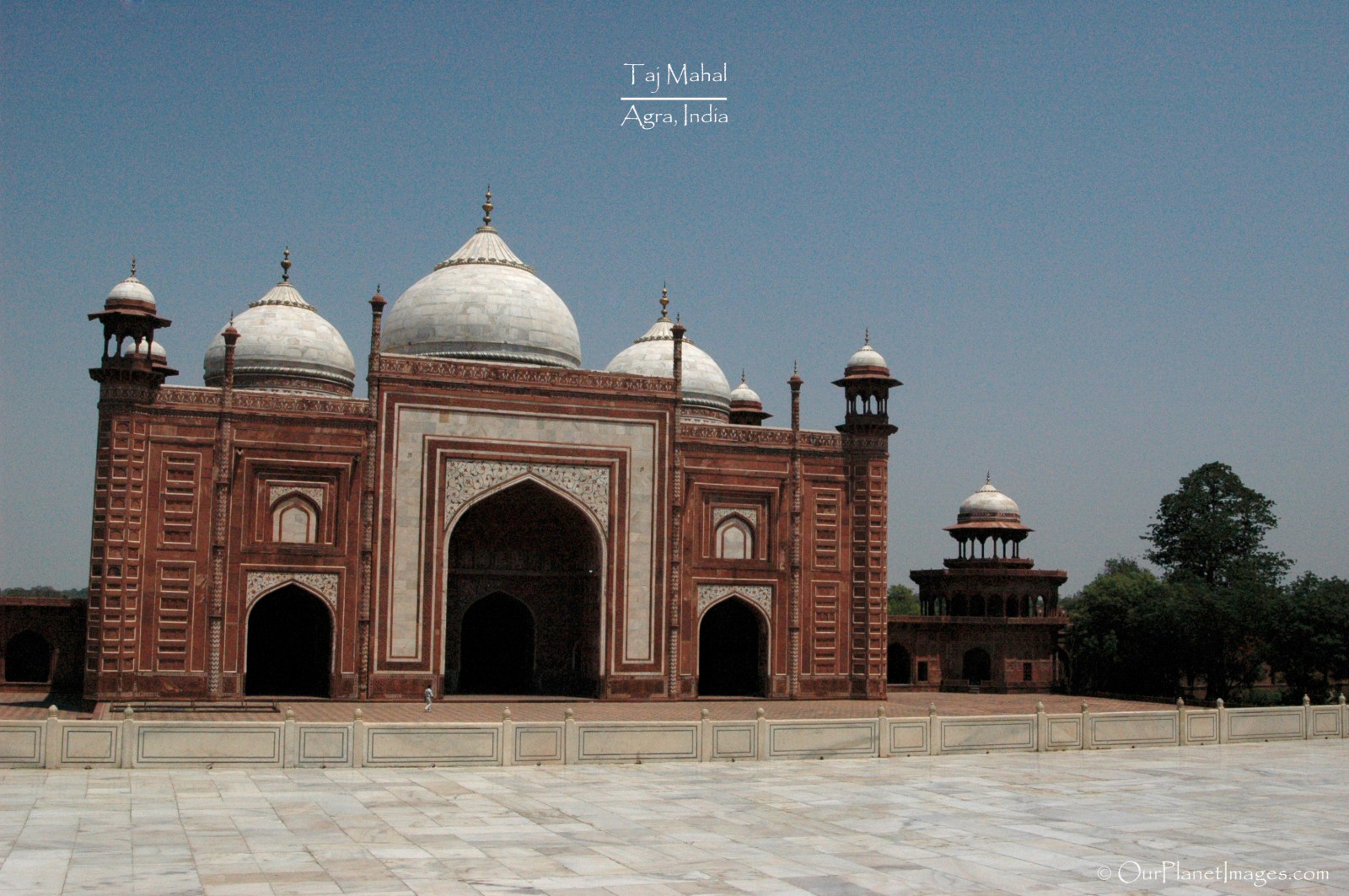
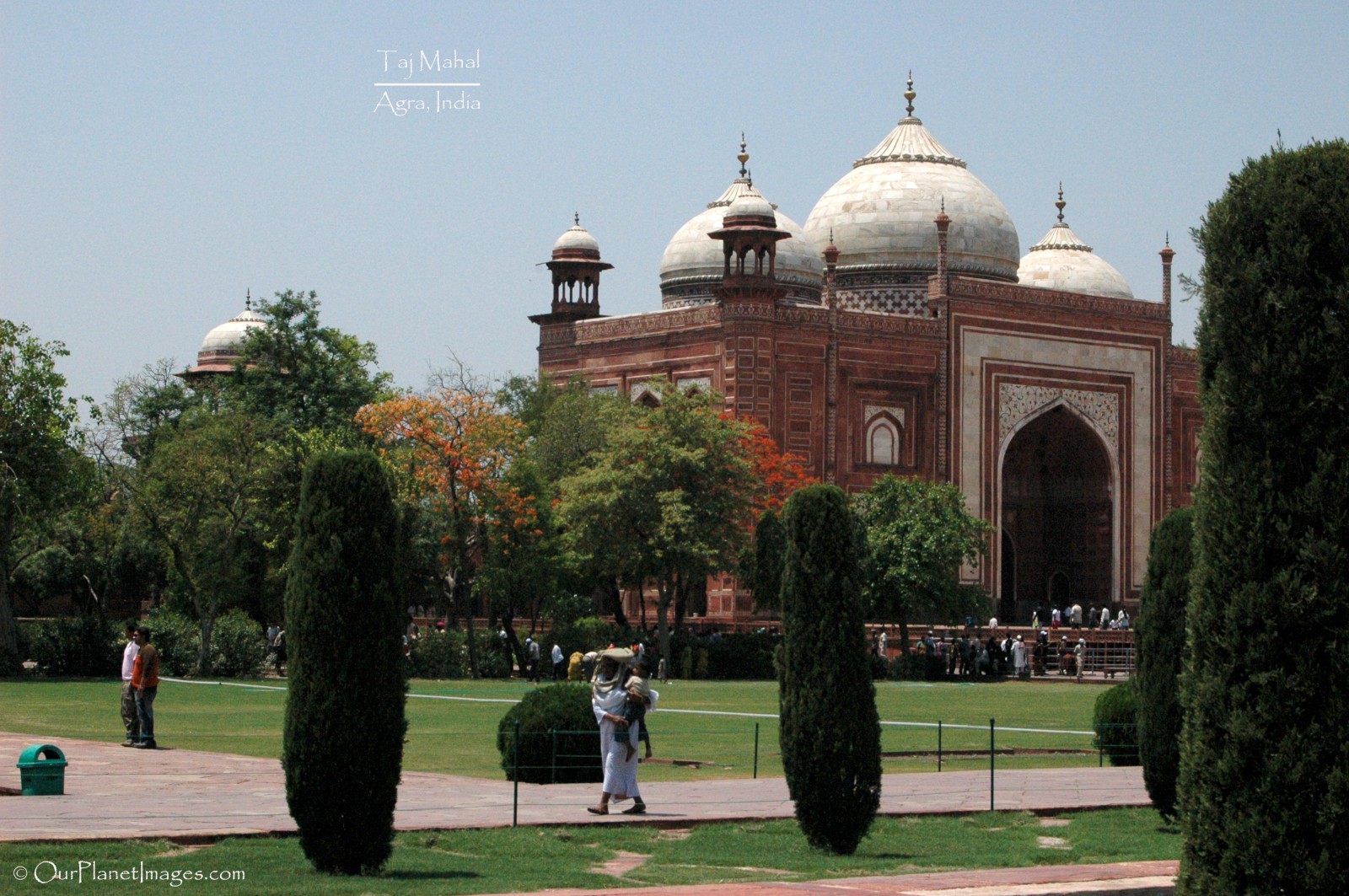
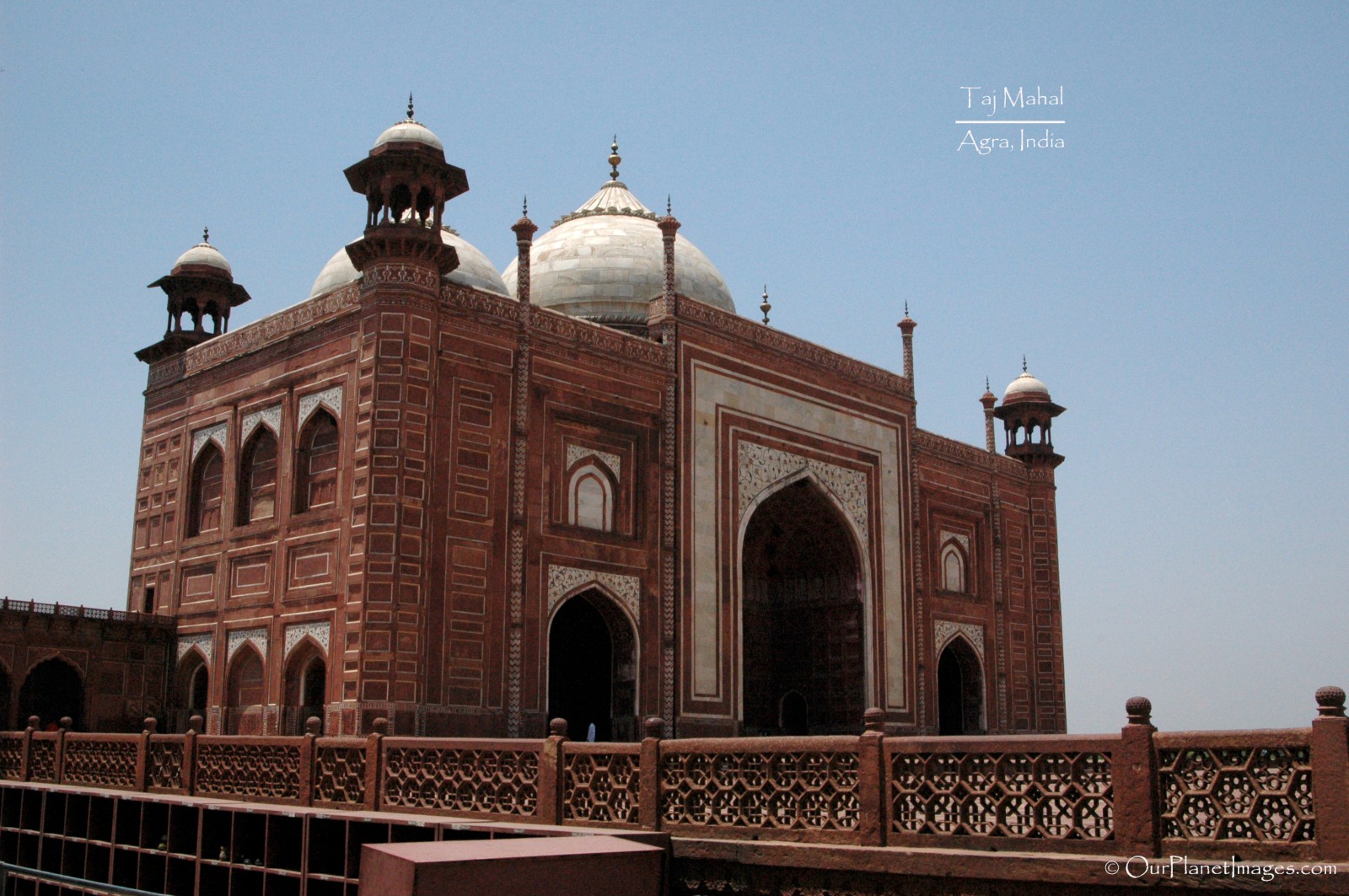
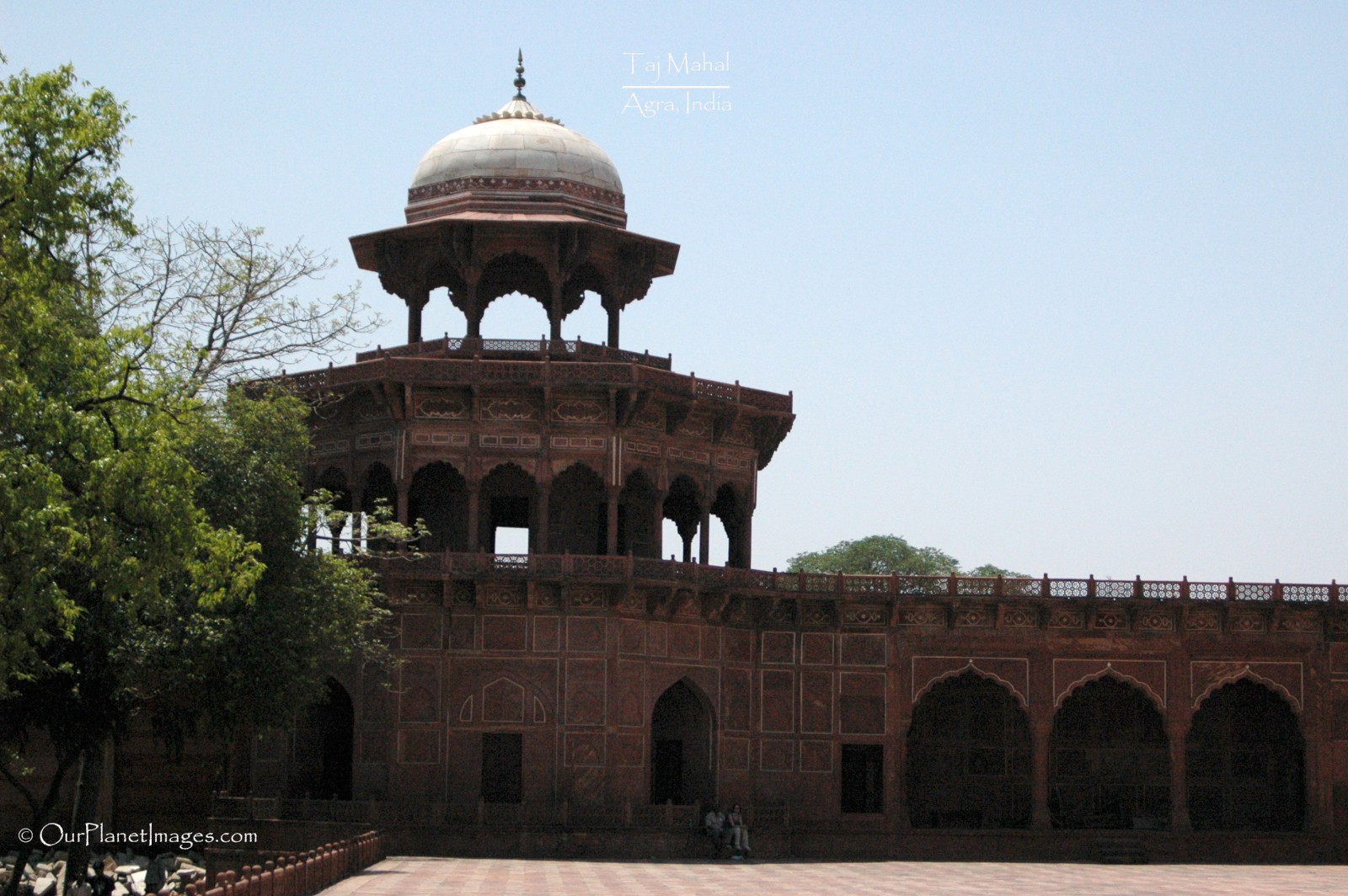
One of the other views of the Taj Mahal that is not commonly seen is the view of the Taj Mahal from the Red Fort. This view is actually the view of the back side of the complex. The following two pictures provide a view of the surroundings of the Taj Mahal and the Yamuna River.
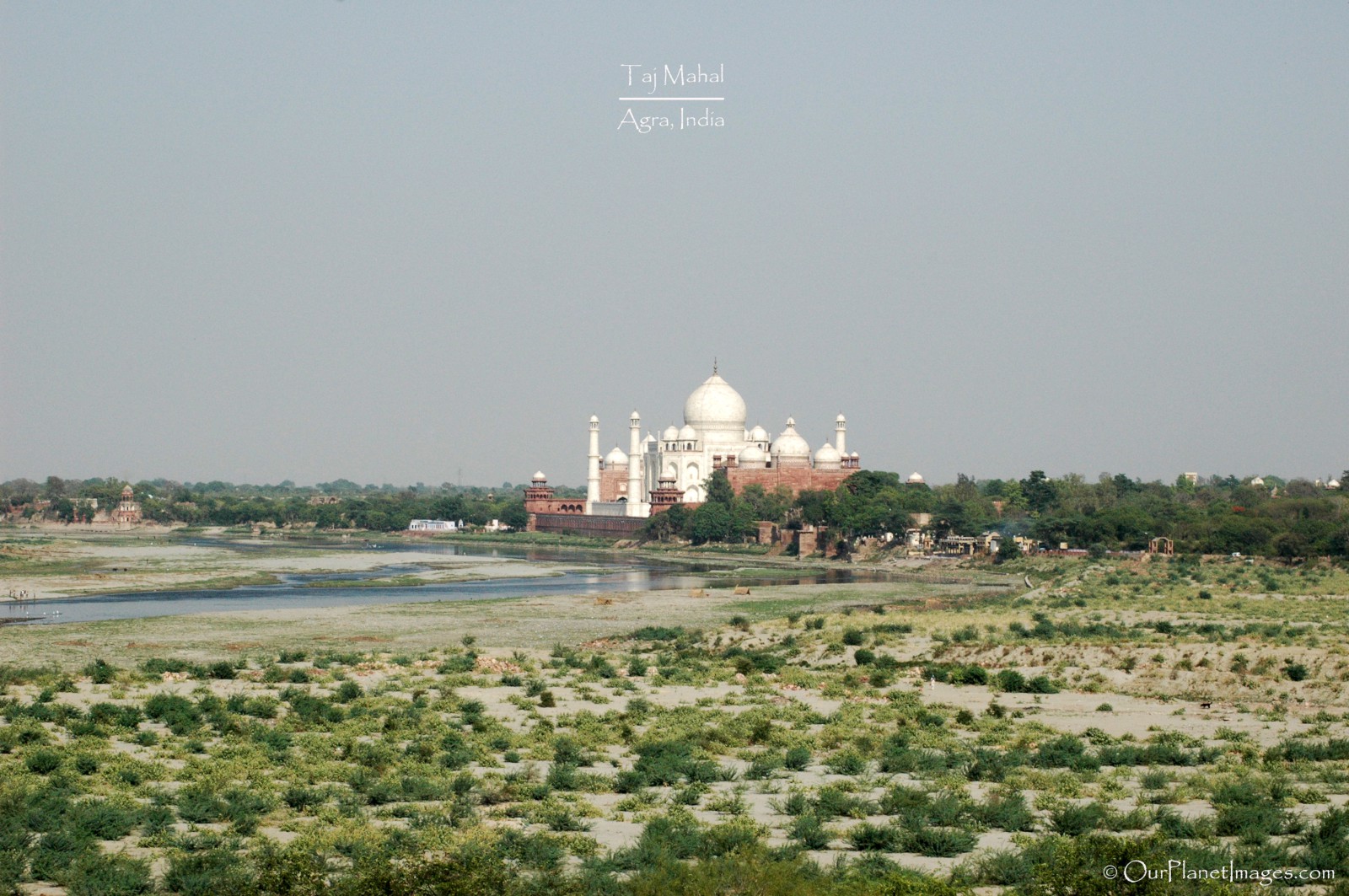
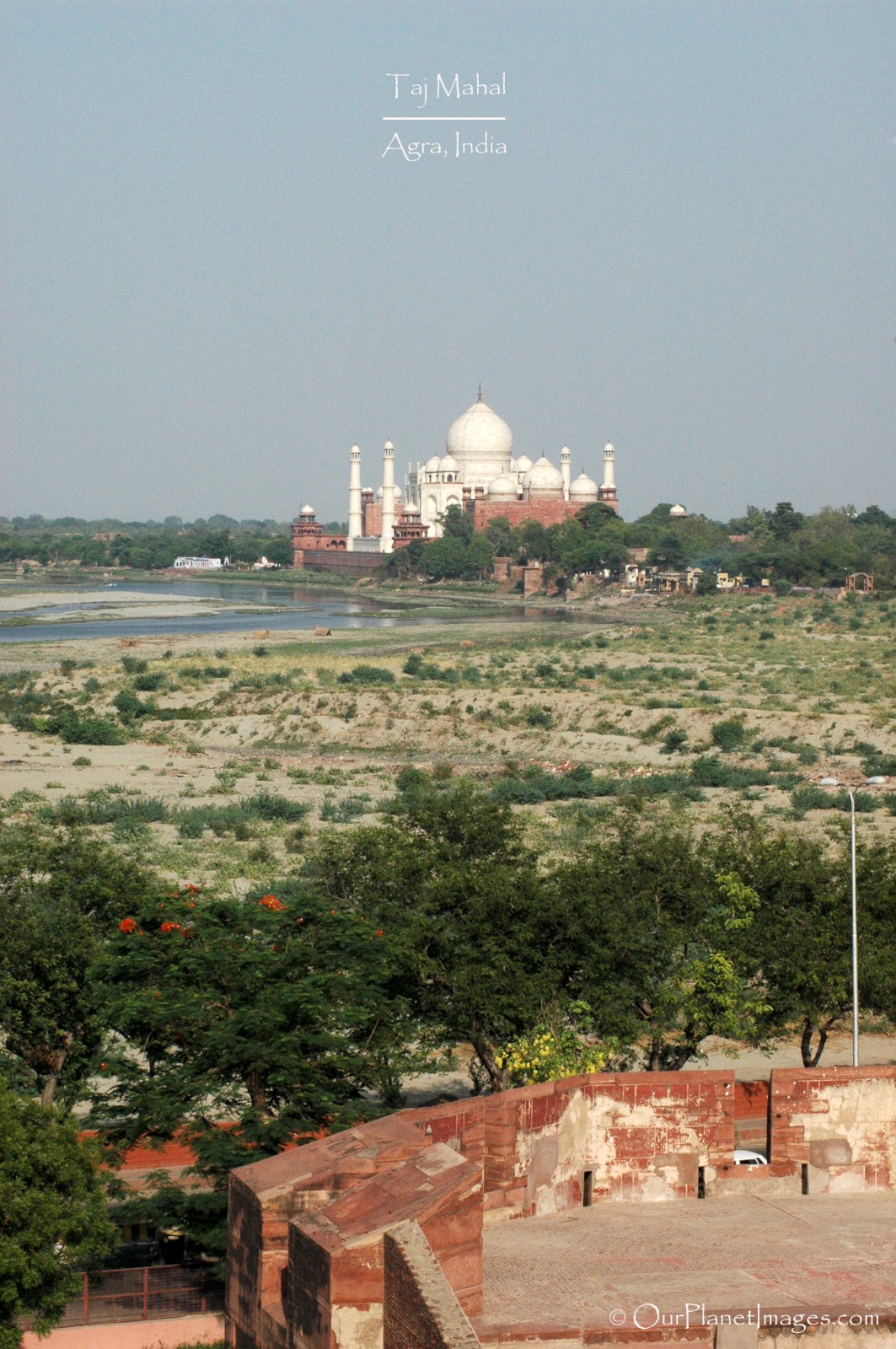
I always like taking photographs through windows and the photo below is a view of the Taj Mahal as seen through a window of the Red Fort.
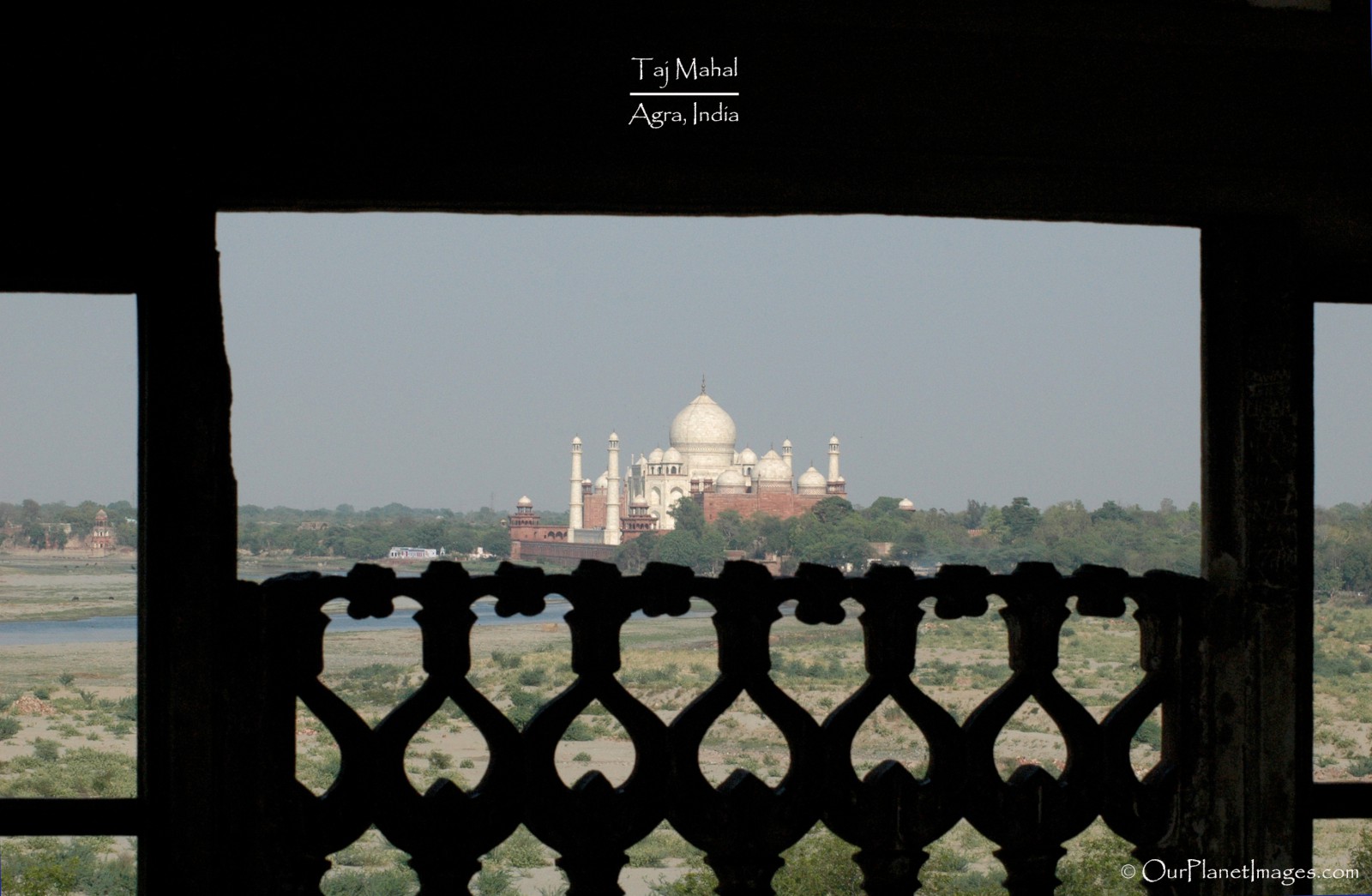
The last two photos are also taken from the Red Fort but these photos provide an outside look of the Taj Mahal with the mosque and the guest house on each side. These photos also give a closer look at the Yamuna River and the Taj Mahal surroundings.
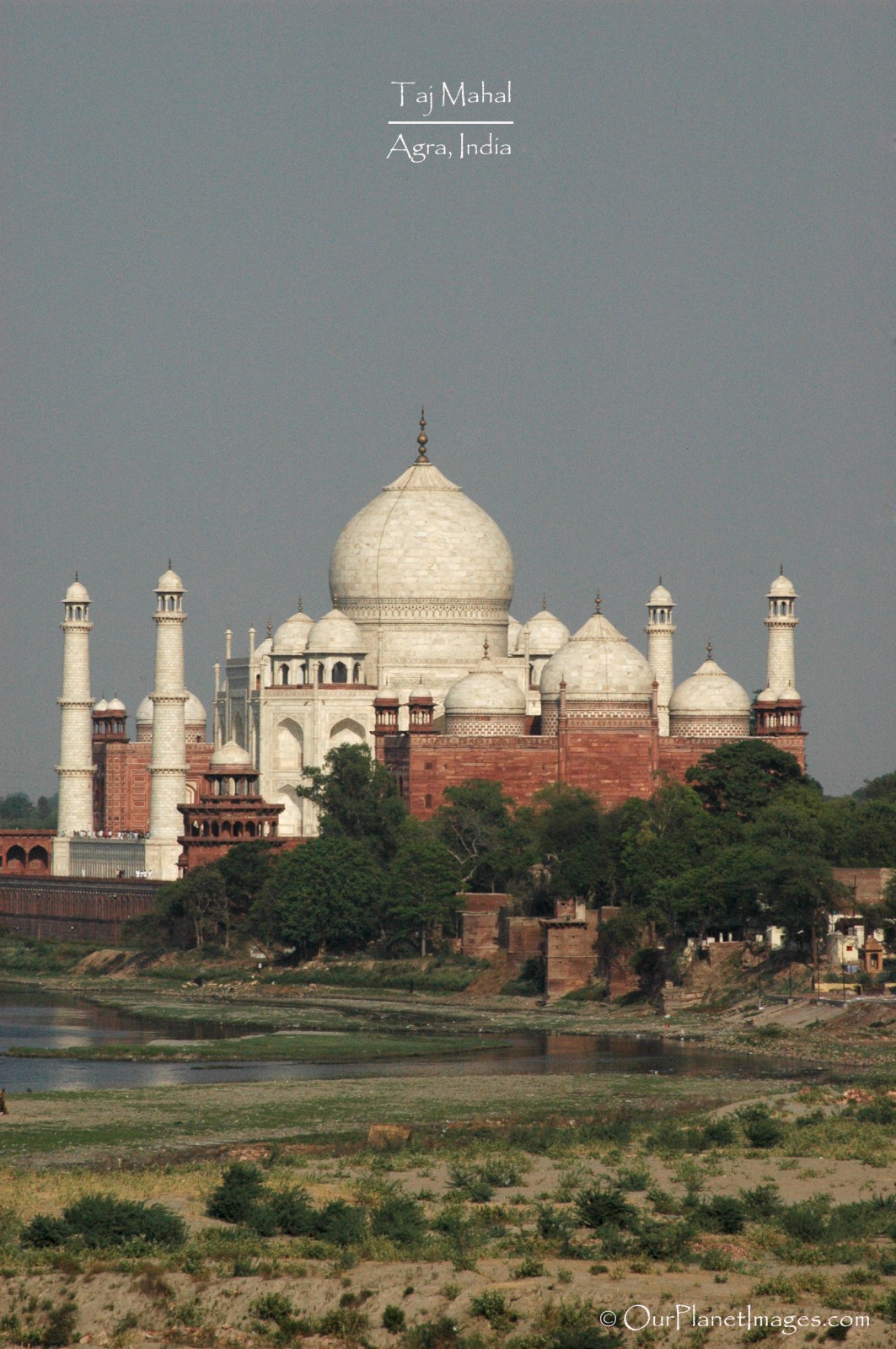
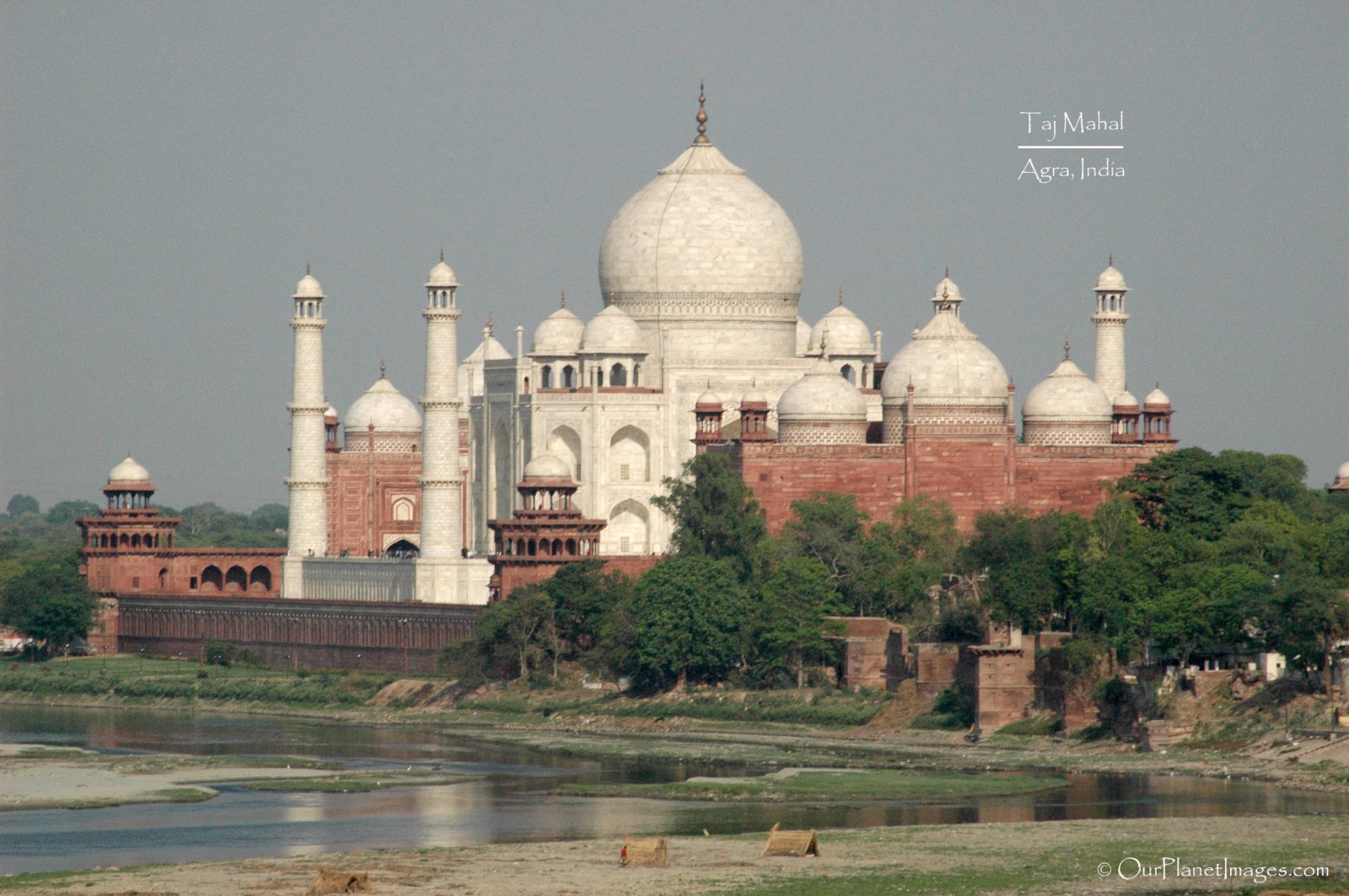
The Taj Mahal truly is amazing. It is one of the most famous places in the world and it lives up to its reputation. I hope that this post has given a better understanding of this remarkable place but there really is no way to accurately describe the experience of being at the Taj Mahal. It is just something that you can only appreciate by seeing it for yourself!
